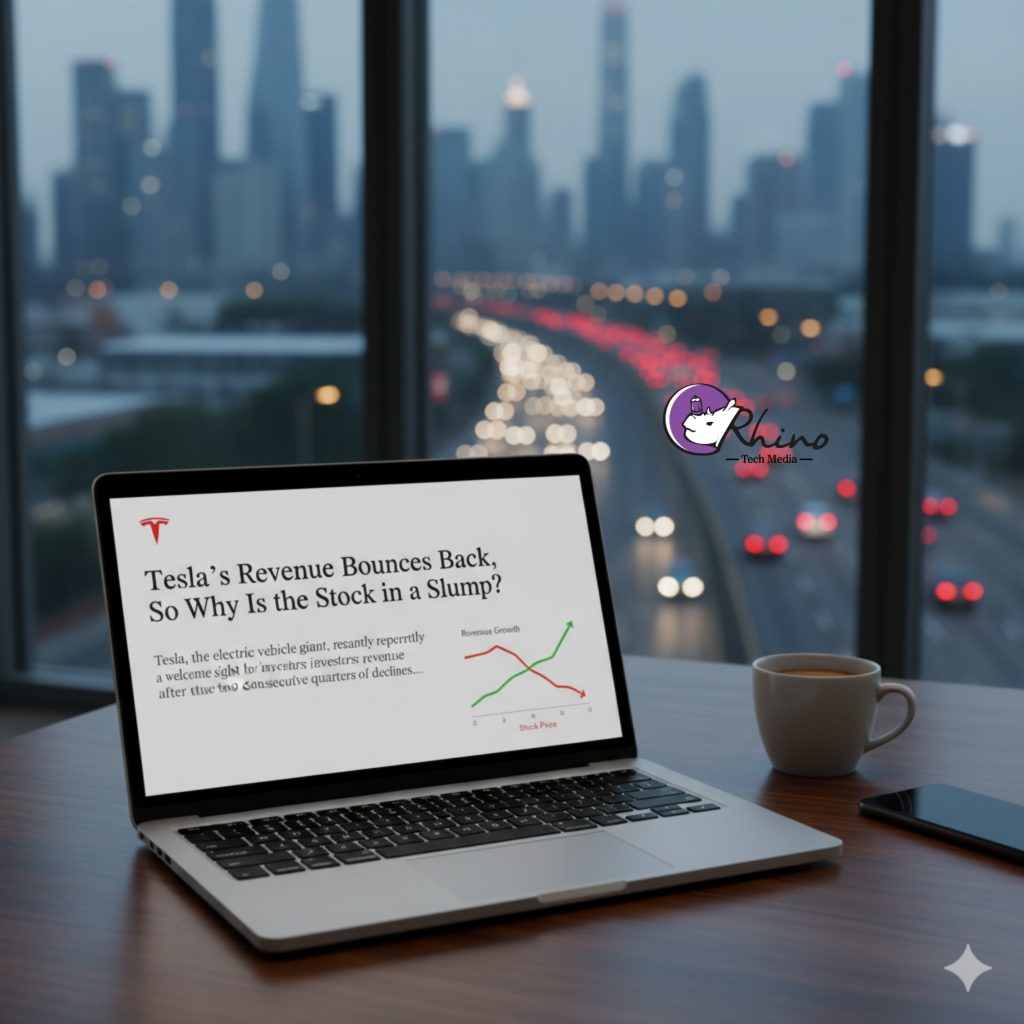Overview of the Tesla, Inc. (TSLA) Q3 2025 Results
Recently, Tesla reported third-quarter results that showed a return to revenue growth after two straight quarters of decline. According to the company, revenue rose by approximately 12% year-over-year to about US$28.1 billion. This increase was driven in large part by record vehicle deliveries, with buyers rushing to lock into U.S. EV incentives before they expired.
However, despite the revenue uptick, the results also revealed several cracks beneath the surface:
- Earnings per share missed expectations (about US$0.50 vs. analysts’ US$0.54 estimate).
- Gross margins and operating income appeared under pressure: for instance, regulatory credit income declined significantly.
- Management commentary emphasised future-oriented bets (robotaxis, humanoid robots, full-self-driving) but gave few definitive near-term metrics.
In short: growth in top line, but several warning lights in profitability, margin sustainability, and forward guidance.
Why the Stock Fell Despite the Revenue Growth
It might seem counter-intuitive that the stock would fall when revenue grew. But for Tesla, the market reaction reflects more than just topline trends. Key reasons include:
1. Earnings & margins disappointed
Although revenue beat expectations, earnings per share missed and margins shrank. For example, revenue growth was accompanied by rising operating expenses: tariffs, R&D investments (especially in AI/robotics) and lower regulatory credit revenues all hit the bottom line.
Investors often care more about profitability and margin trends than just revenue growth—especially in a company that has been priced for high growth and high margins.
2. High growth expectations already baked in
Tesla has been valued not just as a car-maker but as a frontier tech company (robotaxi, AI, humanoid robots). Thus, the market expects substantial proof of future growth, not just a rebound in revenue. When those proofs don’t materialise (or appear vague), the stock becomes vulnerable.
3. One-time / non-recurring tailwinds fade
The revenue increase was partly driven by customers rushing to buy ahead of expiring U.S. EV tax credits. That means some of the growth may have pulled forward demand rather than indicating a sustained ramp.
Also, regulatory/credits income—which had supported margins in past periods—is declining.
4. Business fundamentals show increasing headwinds
Tesla faces a number of structural and external challenges:
- Rising tariffs and input-cost pressures that squeeze margins.
- Intensifying competition globally (especially from Chinese EV makers) and slowing growth in key markets. For instance, Tesla’s sales growth in Europe has weakened.
- The shift to lower cost models and downward price pressure means margins are under threat.
- Guidance and commentary from management were cautious: even as the company highlighted future initiatives, they didn’t offer strong near‐term clarity. That leaves investors uneasy.
5. Sentiment and executive noise
The market is sensitive to both the fundamentals and the leadership narrative. In Tesla’s case, commentary around a large compensation package for Elon Musk, criticism from proxy advisers, and aggressive future-oriented claims (robot army, humanoid robots) may have dampened investor confidence.
When a company emphasises “the future” over clear near-term metrics, investors may sell on any hint of dilution or risk.
What This Means Going Forward
Tesla’s return to revenue growth is encouraging, but it is not a clean signal of strength in all dimensions. For investors (and for those tracking the company) several themes are important going ahead:
- Margin health: Can Tesla restore or maintain healthy profitability as it transitions to lower cost/mass models and as regulatory/credit tailwinds fade?
- Sustainability of demand: Was the Q3 uptick a “rush forward” effect or the beginning of a sustained rebound? The company’s guidance and delivery cadence will matter.
- Clarity on future businesses: While the robotaxi and humanoid robot announcements are exciting, investors will expect concrete updates—production targets, regulatory approvals, timelines.
- Cost control and macro risk: Tariffs, supply chain issues, input inflation, and competition will all test Tesla’s ability to scale profitably.
- Sentiment risk: Leadership decisions, governance, compensation, and communication will continue to impact how the market views the risk/reward of Tesla’s story.
Conclusion
In summary, Tesla’s Q3 report shows a return to revenue growth after two down quarters, which by itself is a positive development. Yet the stock’s decline reflects broader concerns: weaker than expected earnings/margins, heavy reliance on near-term tailwinds (tax credits), structural headwinds in the automotive business, and a leadership narrative that emphasises long-term bets more than near-term clarity.
Investors had broadly priced Tesla for both high growth and high margin. When the actual numbers emphasised growth but exposed margin and risk issues, the disappointment was enough to weigh on the stock.

